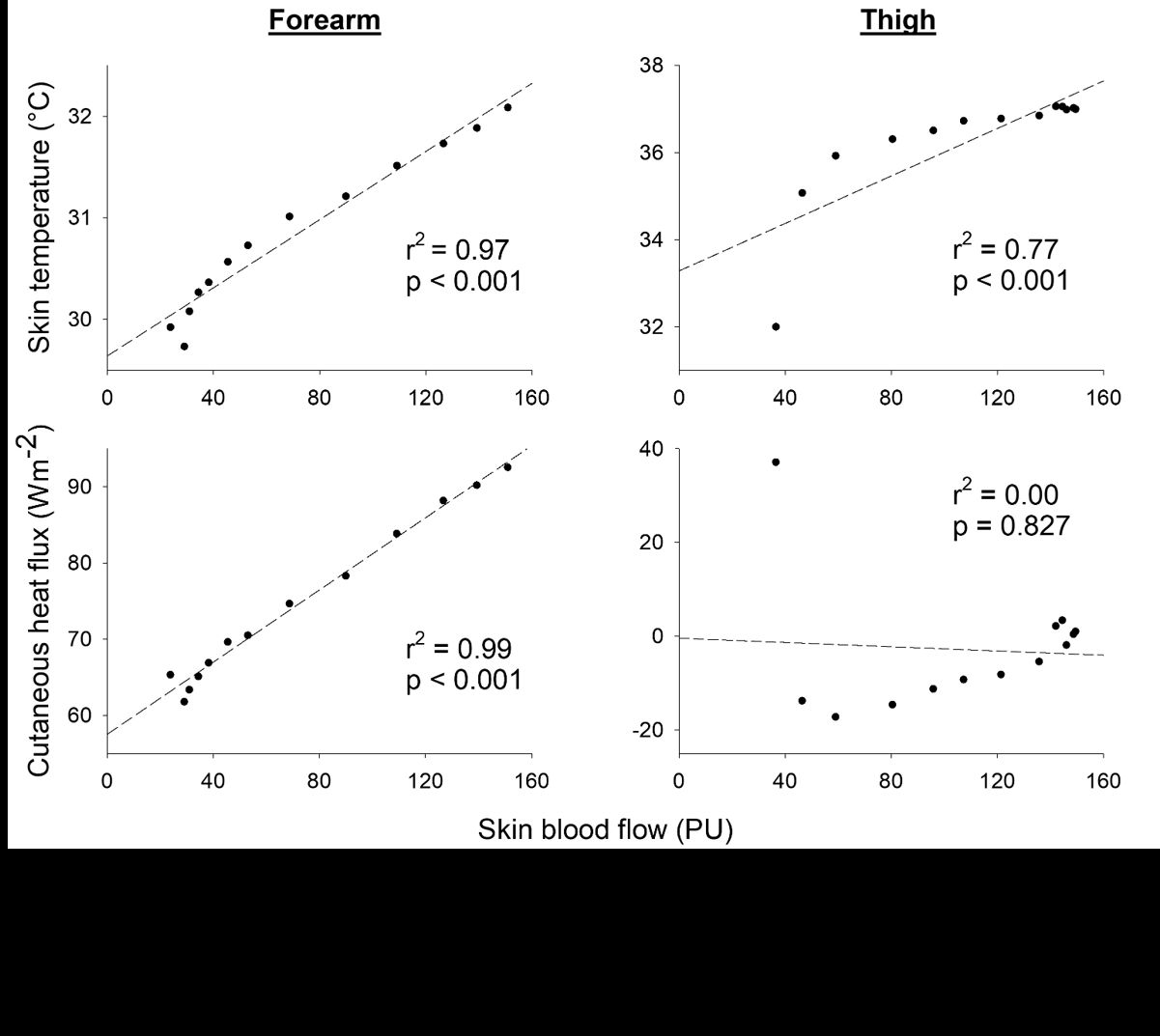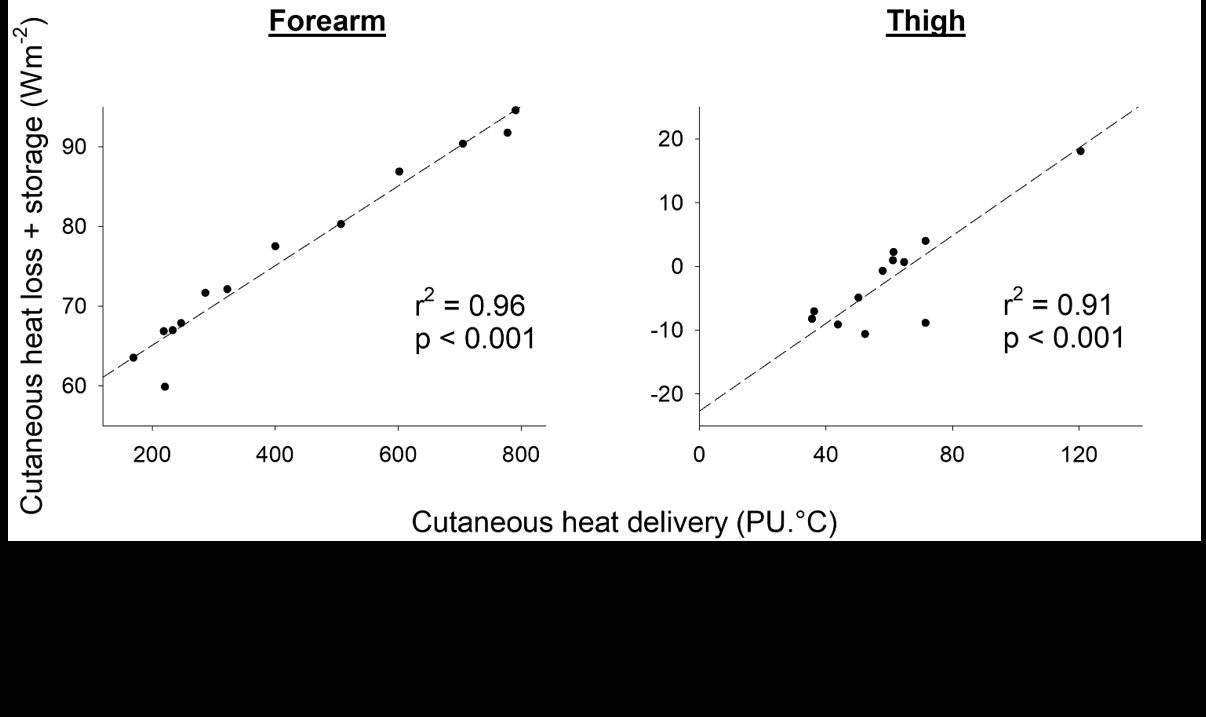Introduction
During cold stress, increased cutaneous vasomotor tone (vasoconstriction) may be inferred from reductions in skin blood flow (SkBF), skin temperature (TSk) or cutaneous heat flux (QSk)1, 2. However, in other scenarios, such as direct local heating or intrapartum epidural anaesthesia, this proportionate relationship is absent3, 4. We propose that the relationship between skin blood flow, skin temperature and cutaneous heat flux may be modelled using a conservation of energy principle:
QD = QSk + QSt (1)
where QD is the rate of heat delivery to the skin and QSt is the rate of heat storage in the skin. The rate of heat delivery may be estimated as follows:
QD α SkBF ⦁ (TC – TSk) (2)
and the rate of heat storage as:
QSt = pSk ⦁ dSk ⦁ cSk ⦁ δTSk (3)
where TC is core temperature, pSk is the density of skin (1.02 g/cm2), dSk is the thickness of skin (1.5mm), cSk is the specific heat capacity of skin (3.47 KJ/kg) and δTSk is the rate of change in skin temperature. Inserting equations (2) and (3) into (1), we hypothesise that the re
Biomedical Basis of Elite Performance 2022 (University of Nottingham, UK) (2022) Proc Physiol Soc 49, PC42
Poster Communications: Modelling the relationship between skin blood flow, cutaneous heat flux and skin temperature during passive heat stress
Christopher John Mullington1,2, Paul Henry Strutton2, Saahil Prasad Hegde3, Aravien Rajadurai3, Mayur Murali4
1 Theatres and Anaesthetics, Imperial College Healthcare NHS Trust 2 MSk Lab, Imperial College london 3 Faculty of Medicine, Imperial College London 4 Division of Anaesthetics, Pain Medicine & Intensive Care, Imperial College London
View other abstracts by:
Where applicable, experiments conform with Society ethical requirements.


